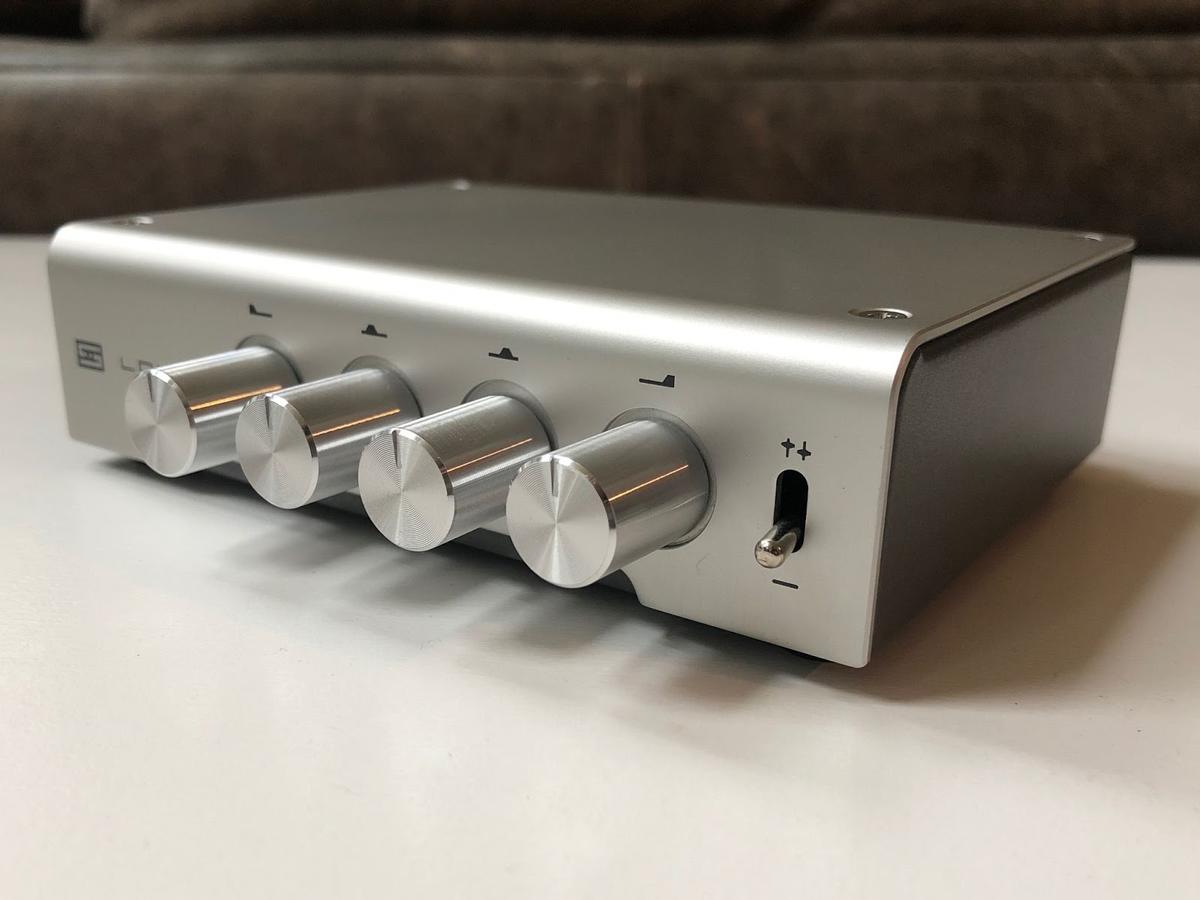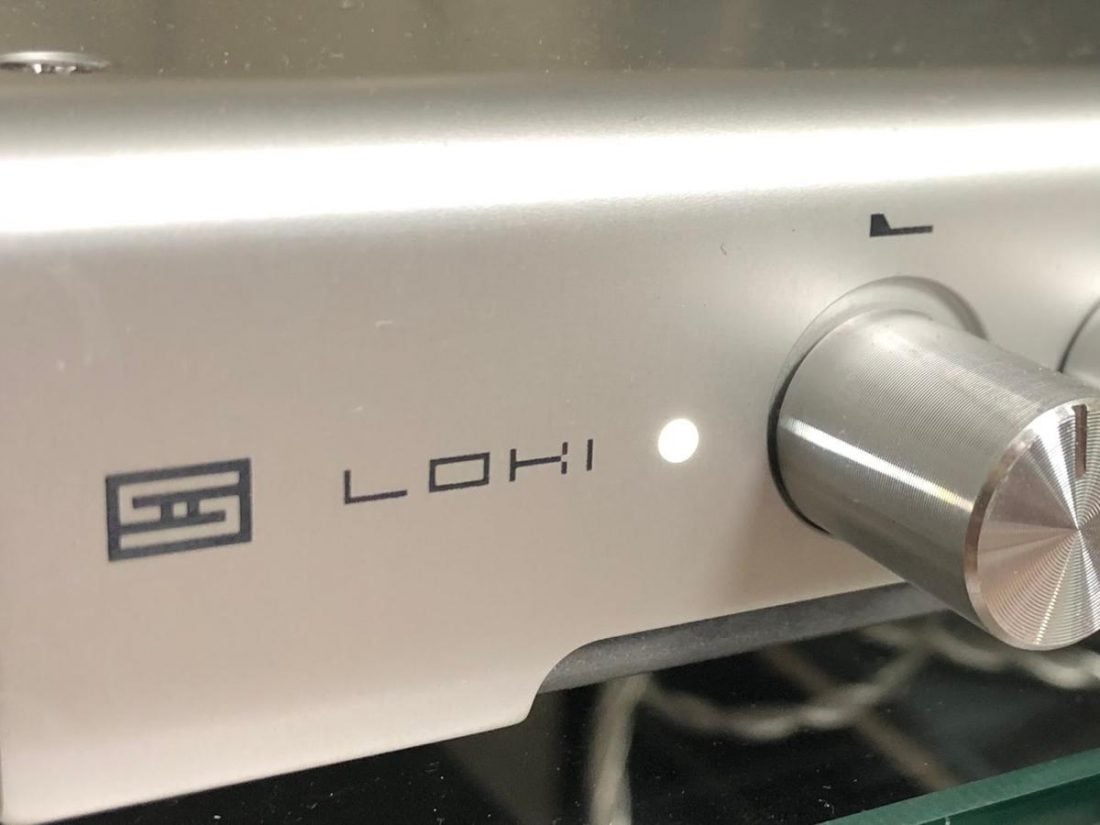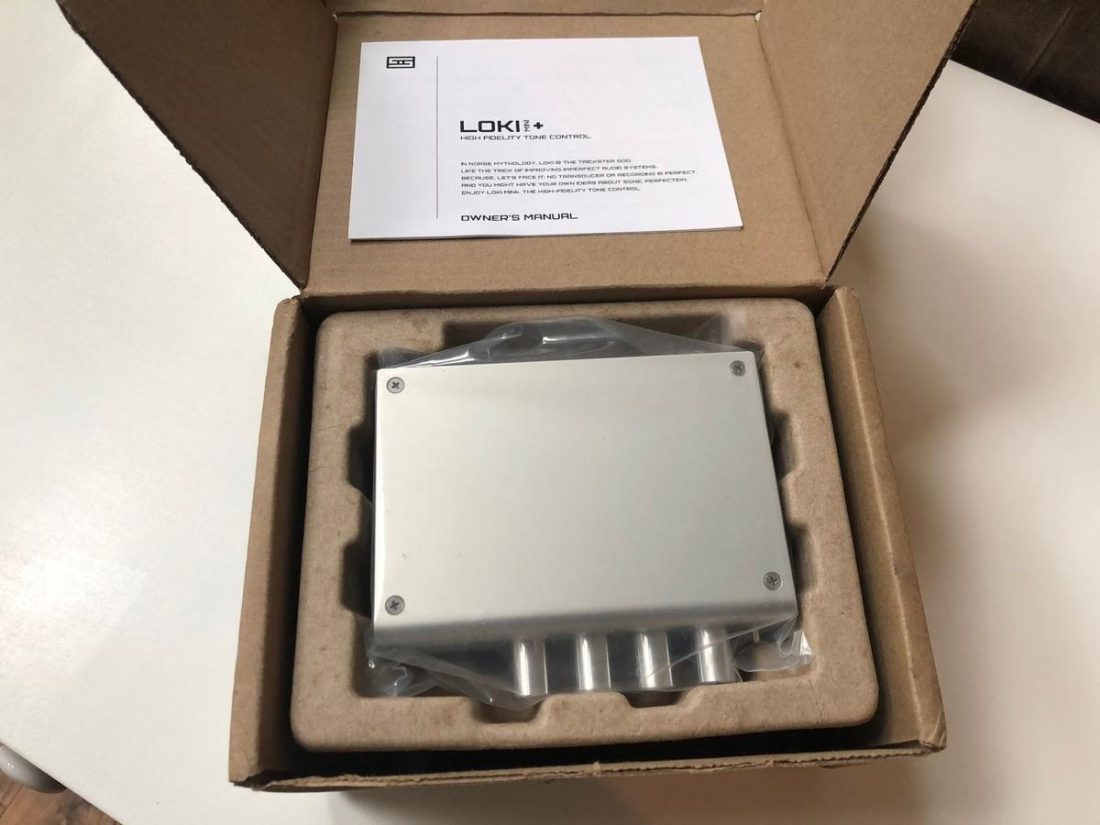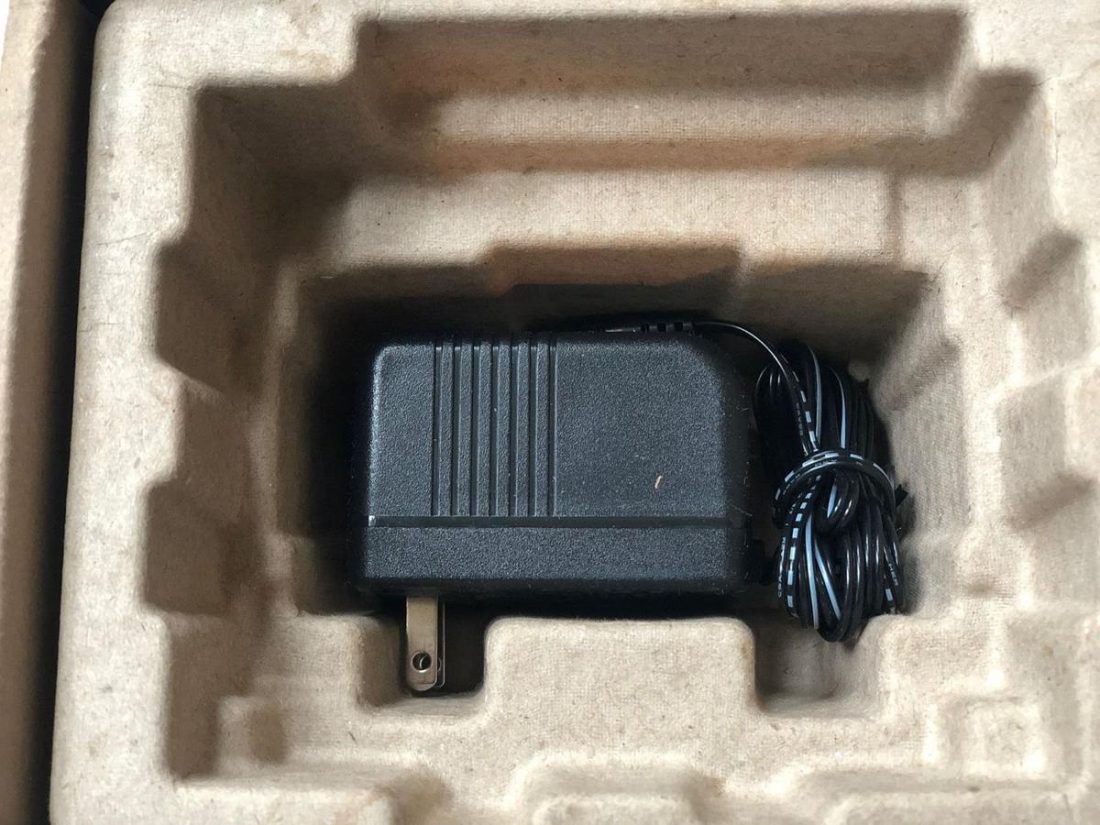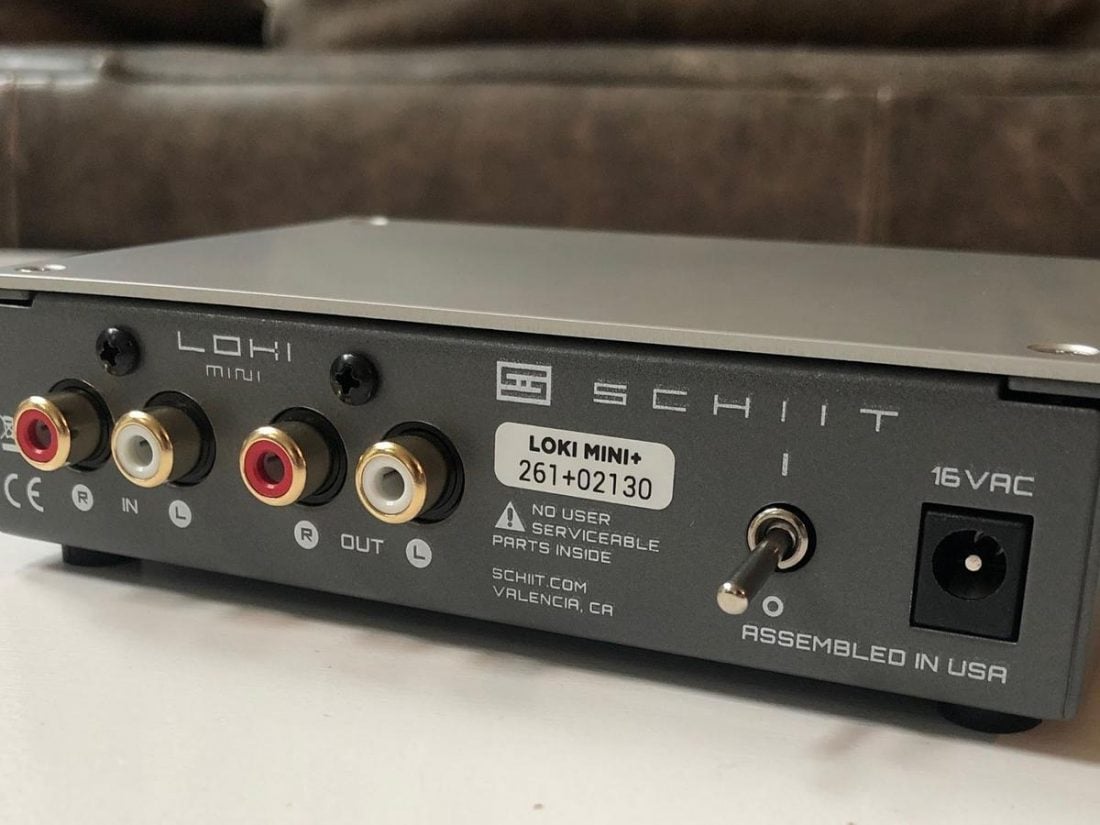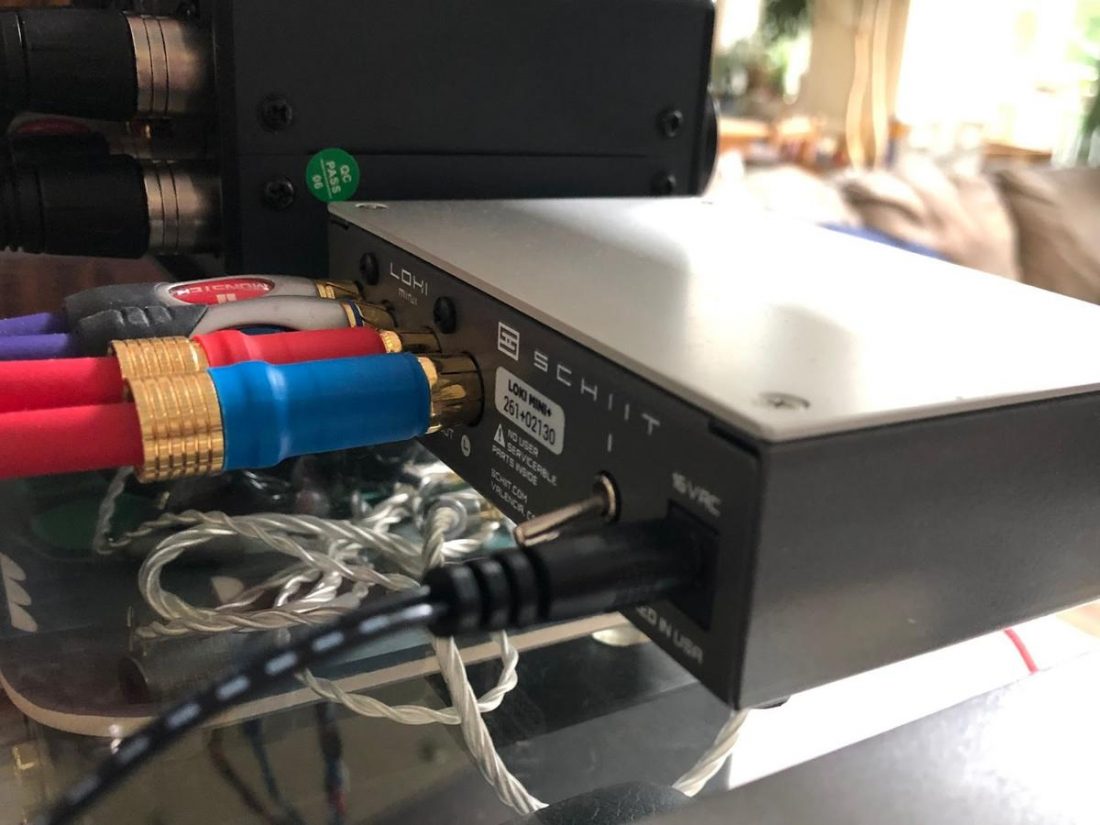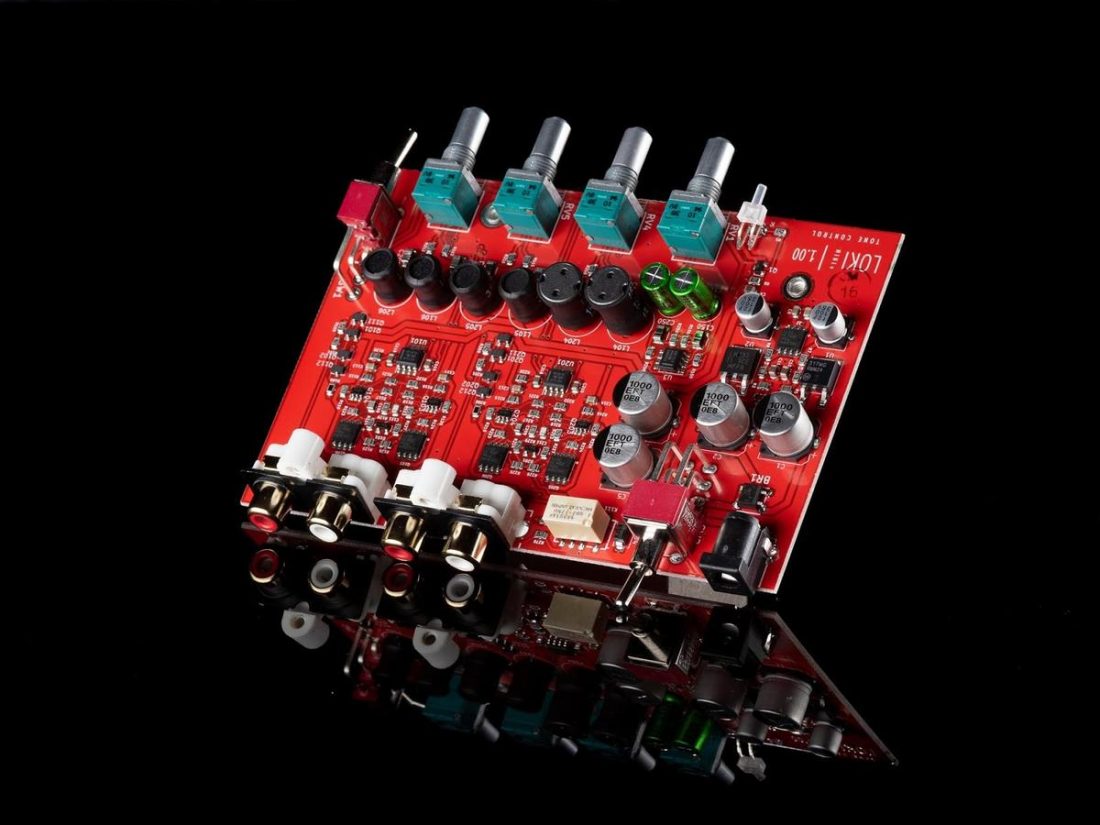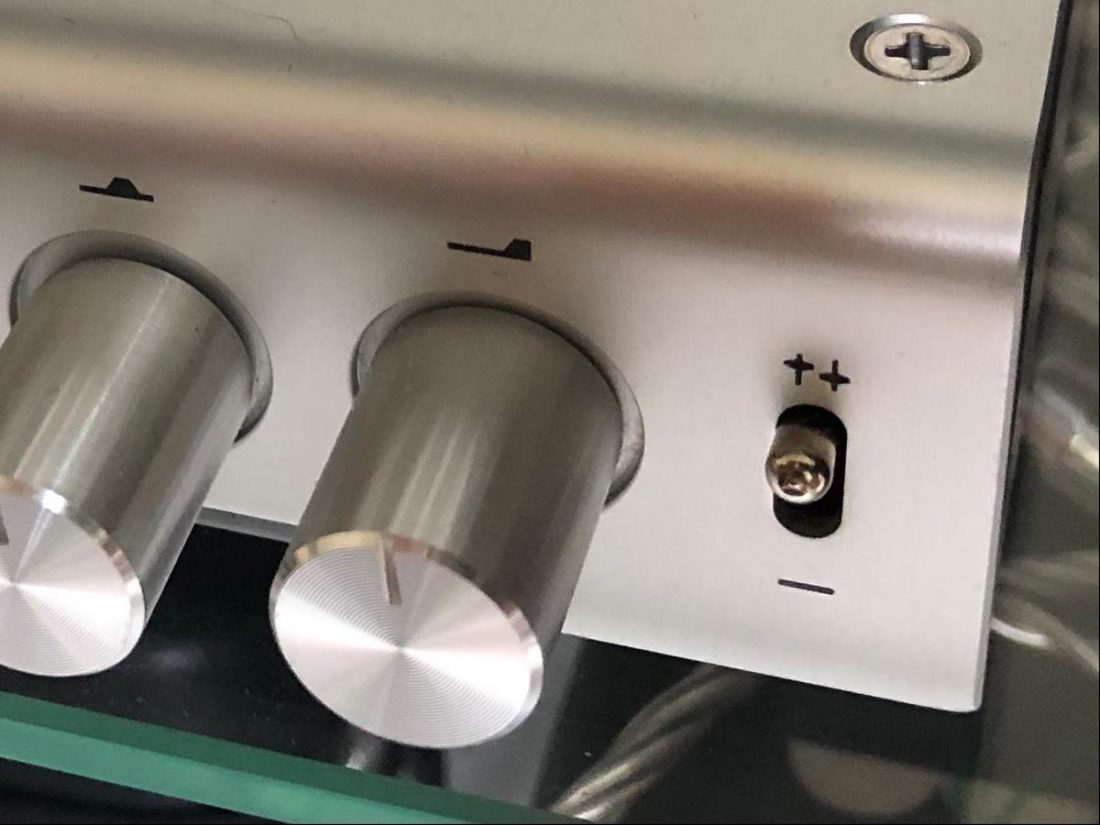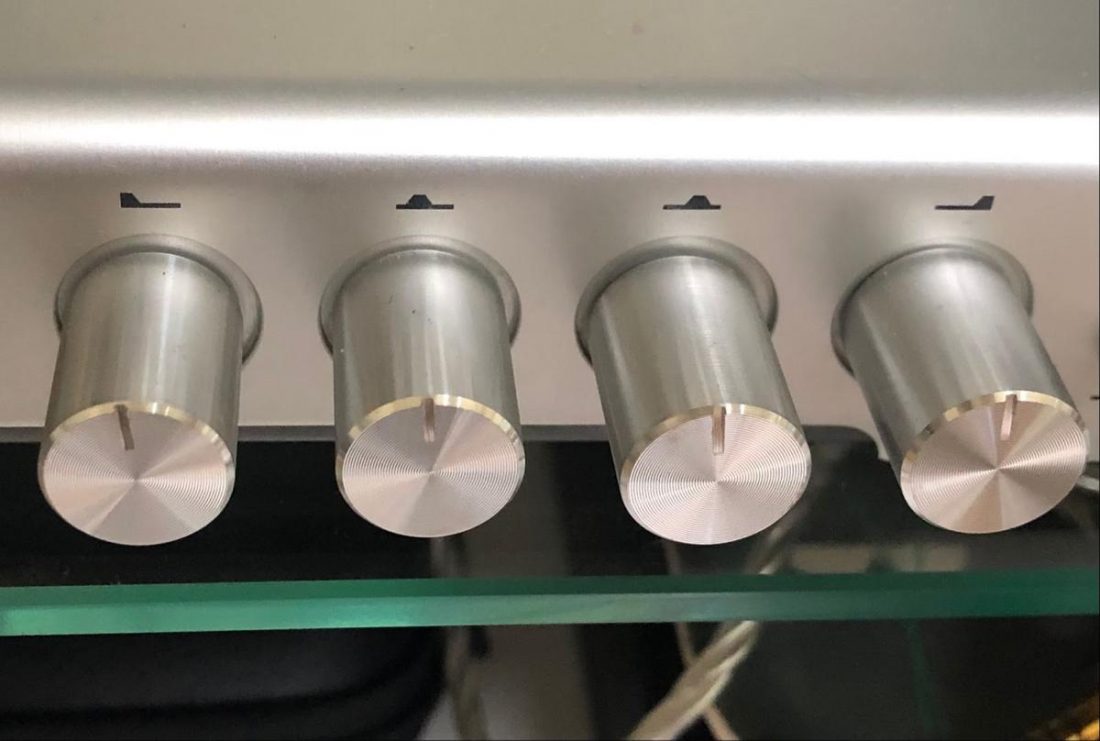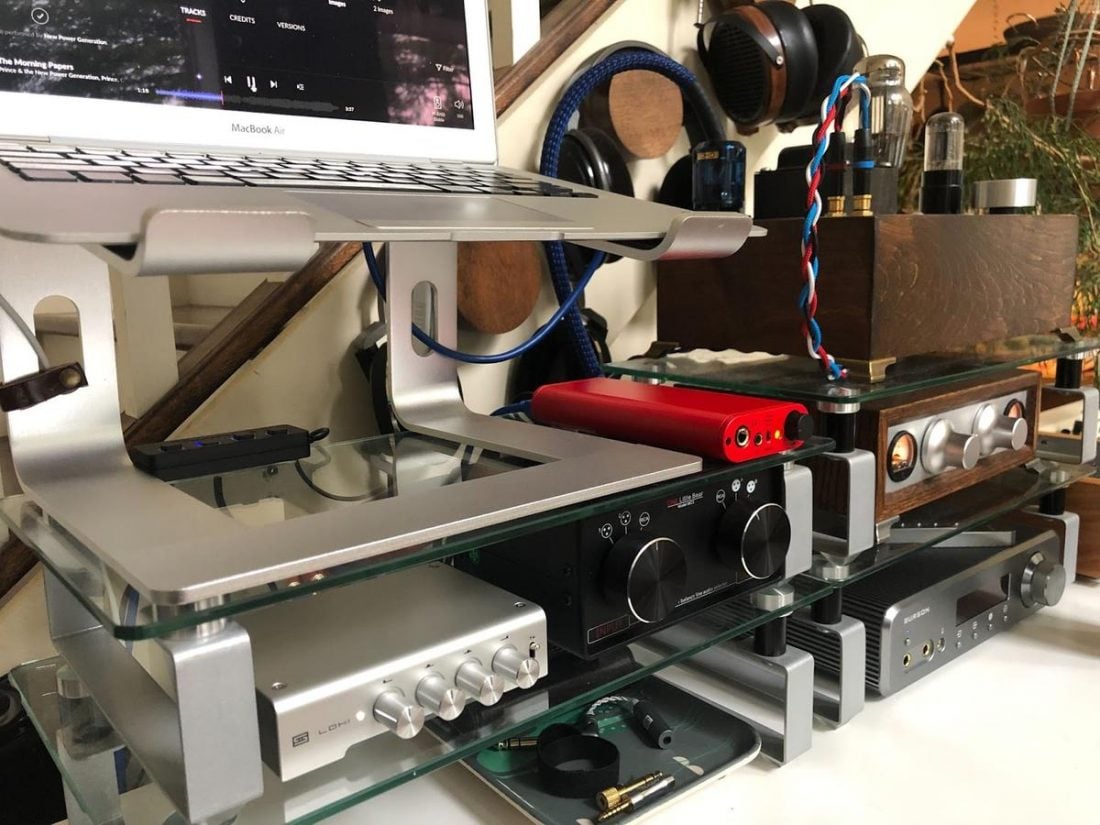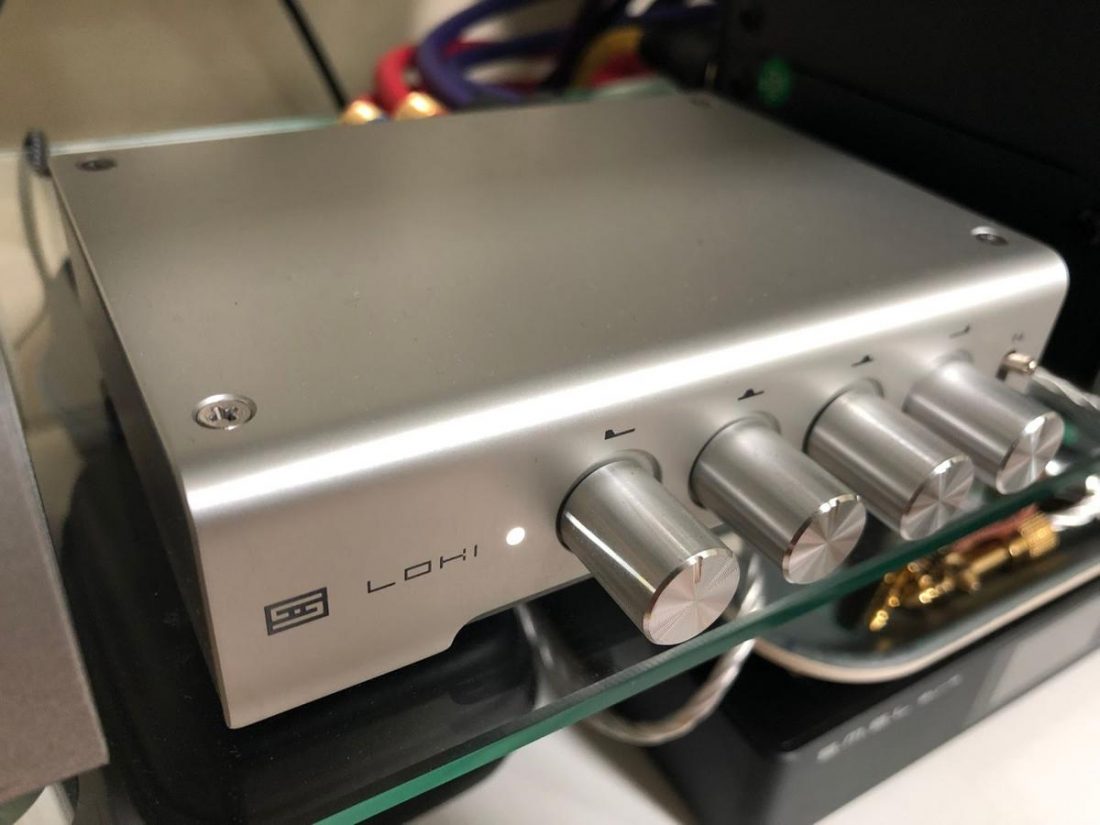Audiophile purists love to draw lines that firmly state that they will ‘NEVER CROSS!’ Such as announcing that they only want to listen to music ‘the way the artist intended.’ Any deviation from this ideal principle is unacceptable for the true purist. If these declarations are taken at face value, they may seem like admirable aspirations. But when you dig a bit deeper, you will discover more questions than answers. Does the artist want you to listen to their music on headphones or a full-sized stereo? And if you can answer that question, certainly not every speaker or headphone driver sounds the same, so which one is the right one? If you are a tube amp user, is it ok to roll tubes to change the sound? How about cable swapping for nuanced audible differences? DAC filter settings? Op-amps? What on earth does ‘the way the artist intended’ mean, anyway? In the early days of hi-fi, tone controls were ubiquitous. Almost every amplifier had a treble knob, a bass knob, and a loudness button. Then the concept of musical purity caught hold in the audiophile world. Suddenly only ‘low-end’ devices would include tone controls, purportedly to fix their ‘low-end’ sound. To be considered ‘high-end,’ components had to eschew any features beyond a power switch and volume control. Tailoring the sound fell out of fashion. But we enthusiasts alter how the combined total of our equipment sounds every day. We audition and choose different audio components and headphones based on how they sound, and they certainly don’t all sound the same. We often swap gear to achieve a final sound that best matches our tastes. So why is the concept of ‘EQ is bad’ still so pervasive? To be fair, not all music lovers are quite so fanatical. Some folks just want to tweak the sound of their gear to address any shortcomings or adjust the overall tonal balance without purchasing a whole new pair of headphones to accomplish it. EQ and DSP don’t have to be four-letter words. Schiit gets it. The Loki Mini+ is Schiit’s second foray into creating a four-band tone control device. The + replaces the original Mini and is intended to be audibly superior. It’s designed to be silent and transparent within a system, including a relay bypass, current-feedback gain stage, and passive filtering. Let’s face it. Is everything you listen to recorded perfectly? Of course not. Some recordings aren’t paragons of tonal purity. And your system…let’s be honest. Some speakers and headphones are a bit bright or a bit dark. Loki Mini+ lets you adjust for these imperfections… Go ahead and make your system sound exactly the way you want it… Don’t spend thousands on cables and tube amps—just turn a knob and make your system sound exactly the way you want it.” – Schiit It’s also meant to easily tailor the sound you listen to. Let’s find out if it works.
Company Overview
Jason Stoddard and Mike Moffat founded Schiit Audio in 2010, with a focus on headphone audio components, proudly designed and made in the US. Schiit believes in innovative designs including Multibit DACs combined with a unique DSP-based closed-form digital filter, discrete analog amps, current feedback circuits, as well as tube and hybrid amplification. All their products are very sturdily constructed and housed in heavy aluminum and steel enclosures. Their higher-end gear features high-quality C-core transformers, extensive power supply filtering, and precision low-noise regulation.
Technical Specifications
Frequency Response: 20Hz-20Khz, -0.1db, 2Hz-800KHz, -3dB Maximum Output: 10V RMS into 10K ohms THD: Less than 0.0008%, 20Hz-20KHz, at 2V RMS in/out, pots centered, active stage enabled, less than 0.005% at any potentiometer setting IMD: Less than 0.001%, CCIF SNR: Greater than 114db, unweighted, referenced to 2V RMS Crosstalk: -80dB, 20Hz-20KHz Output Impedance: 75 ohms Input Impedance: 47K ohms Bands: 20Hz, 400Hz, 2kHz, 8kHz Adjustment: +/-12dB at 20Hz and 8kHz, +/-6dB at 400Hz and 2kHz Topology: fully discrete, all-bipolar, symmetrical current-feedback design with matched parts throughout, driver stage, DC coupled, and DC servo Filtering: capacitor-gyrator for 20Hz, capacitor-inductor (LC) for all other bands Power Supply: “Wall wart” style 16VAC transformer, regulated +/- 15V rails Power Consumption: 4W Size: 5 x 3.5 x 1.25” Weight: 1 lb
Packaging
Simply the most luxurious unboxing experience I have ever experienced. In a word, superlative. Well… no. Not actually. A small brown cardboard shipping box houses the plastic bag wrapped Mini+ within. Tada! You aren’t paying anything extra for packaging, and it’s about as environmentally friendly as equipment wrapping can get. Schiit promises good value, and cutting out the frivolous stuff like pretty packaging is a decent place to start.
In the box
Loki Mini+ 16v AC wall-wart style power adapter Paper manual
This is a budget-priced device and the packaging and accessories reflect the low price tag. No frills and you supply the RCA cables. Plug, play, and go.
Design
While the accessories reveal the Mini+ budget price, thankfully, the build quality does not. In traditional Schiit style, the front and top plates are made from a single piece of curved aluminum plate screwed securely to a sturdy steel chassis. It’s a simple, attractive, and distinctive look that is iconic to Schiit. The Mini+ is available in both flat black and the standard Schiit brushed silver colorway. It shares the same mini size as the traditional beginner ‘Schiit Stack’ consisting of the c-note priced Magni headphone amplifier and Modi DAC. Although 50% more costly, the Mini+ is an easy addition to this setup but it will work well with components from all manufacturers. The Mini+ has input and output RCA jack pairs on the back, along with a power switch and socket for the power supply. Setup is as easy as positioning the Mini+ between any single-ended DAC and an amplifier with a couple of RCA cables. The front panel is also very straightforward. Starting on the left is a white power LED, four tone control knobs (20Hz, 400Hz, 2kHz, and 8kHz) with small visual labels above them, and a single bypass switch on the far right. Consider the four tone controls as adjusting bass, mid-bass, midrange, and treble frequencies. The knobs are centered at 12:00 and can be rotated counter-clockwise to lessen, or clockwise to increase the volume of those frequencies. The knobs all feel high quality (mated to Alps potentiometers inside) and are a pleasure to use. If you’ve ever dabbled with equalizing in the digital domain, it is easy to get lost down the rabbit hole of too many choices. The Mini+ simplifies this daunting process. Want less treble and more bass? Just twist the applicable knobs until it sounds good to you. The bypass switch works as it should. It’s mated to a relay that electrically isolates the Mini+ from the circuit path (effectively just joining the inputs and outputs) and serves as a sublimely easy way to quickly A-B test any changes you’ve made. The Mini+ is exactly what it purports to be. Nothing more. Nothing less. And that’s a good thing.
Internals
According to Schiit, the “Loki Mini+ uses a single, discrete, current-feedback gain stage, coupled to passive LC filters for 3 bands, plus a gyrator for the bass.” And, as it turns out, ‘gyrator’ is not a made-up word. You never can be quite sure with the Schitt smart-ass approach to copywriting. Schiit claims that the Mini+ is a significant upgrade from the previous version. The + has a “new gain stage with drivers before the output to increase linearity, as well as matched devices throughout. In addition, there’s a new power supply that dramatically reduces noise.” Additionally, the + boasts lowered maximum THD levels even at the extreme ranges of the tone controls.
Loki Mini+ Sound
First off, let’s address the biggest concern with tone controls. The Loki Mini+ is acoustically transparent with the knobs set to flat (12:00) or if the bypass is engaged. You don’t know it’s in the chain, because it doesn’t alter the sound in any audible way. No signal degradation, nor unwanted audio impurities. It’s only unnoticeable, of course, until you start rotating those knobs. The Mini+ allows more range at the extremes (+/- 12dB @ 20Hz and 8kHz, and +/- 6dB @ 400Hz and 2kHz). The lowest bass range (20Hz) is useful for fleshing out and adding depth to lean-sounding headphones, while the midrange 400Hz control greatly impacts the forwardness of vocals. Hats off to Schiit on selecting those particular four frequencies out of the entire audible range, as they seem to be entirely serviceable and useful for fine-tuning music. The controls work well to tame more forward frequencies, and lowering the bass knob a bit did wonders to control the (sometimes too) prominent low-end of the Meze 99 Classics headphones. For those sensitive to the peak often found around 2-3kHz in IEMs, the Mini+ allows you to dial in this range to your liking. The Mini+ is not a ‘parametric’ EQ, which offers gain control over any frequency within a range and also allows users to control the bandwidth (Q). According to Schiit, the + “…is a single-gain-stage active EQ with non-constant-Q passive filtering. In more English-y terms, that means that each band varies from broad to narrower as its gain is increased—small turns of the knobs result in broad, shallow changes, and bigger turns result in more narrow-band changes.” Straight up, it works. The + allows you to easily tune your music in a pleasing, simple, and tactile manner. Schiit promises “correcting for bad recordings or imperfect systems… Pounding bass… Crystalline highs? Absolutely”. That’s all a bit strong, as the Mini+ is limited by the source material, gear, and the physical drivers it is connected to. It can’t transform a poor system or recording into something it is not, but given somewhat realistic expectations, it is impressively effective. A plus for many potential users is the ability to fine-tune game audio as well as music. Want to boost midrange frequencies to better highlight footsteps or dialog? The Mini+ may be just the tactical advantage you are looking for, especially on consoles that do not allow for the same level of software tweaking available in PC gaming. Again, it’s all instantly defeatable via the front-mounted switch if desired.
Where to Buy
Official Store
Conclusion
Ironically, the Schiit company consistently produces non-Schitty products. The Loki Mini+ is no exception. In their words, it’s “the most purist approach to tone controls.” Some might think that the Loki Mini+ is only suitable for entry to mid-level setups. I disagree. Any open-minded audiophile, whether a user of headphones or a full-sized stereo, is bound to find much to like in the sound control offered by the Loki. It’s a flexible, effective, and surprisingly affordable way to fine-tune the sound of your system. Somehow Schiit has managed to capture all the trickster charm of Tom Hiddleston in a tiny little package that you can easily integrate into your desktop setup. Are your favorite pair of headphones a bit too much, or a tad too little of something? Enter the shape-shifter god of Norse mythology. Sometimes helpful, sometimes not, but always charming, and this time he’s entirely under your control. (And easily bypassed if desired!) As much as we might wish for them, there is no perfect-performing pair of all-rounder headphones. But it’s simply not necessary to purchase a different pair of headphones for each music genre when you can tailor the sound with the Mini+. You can get more out of the gear you already own. For the price, you owe yourself the opportunity to cross that audiophile line drawn in the sand and give tone controls a try. You might just like what you hear.
